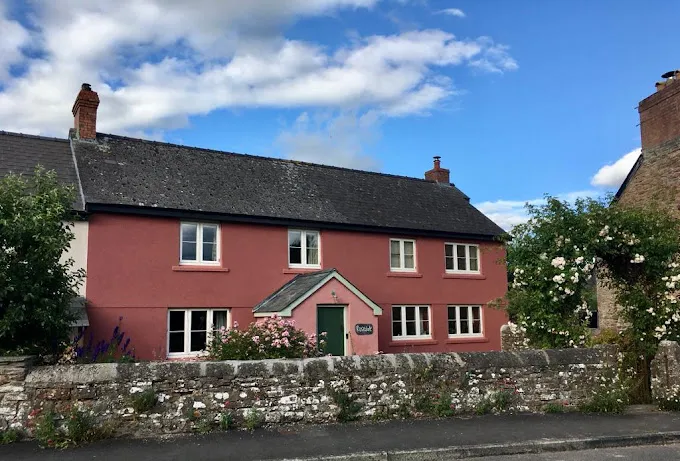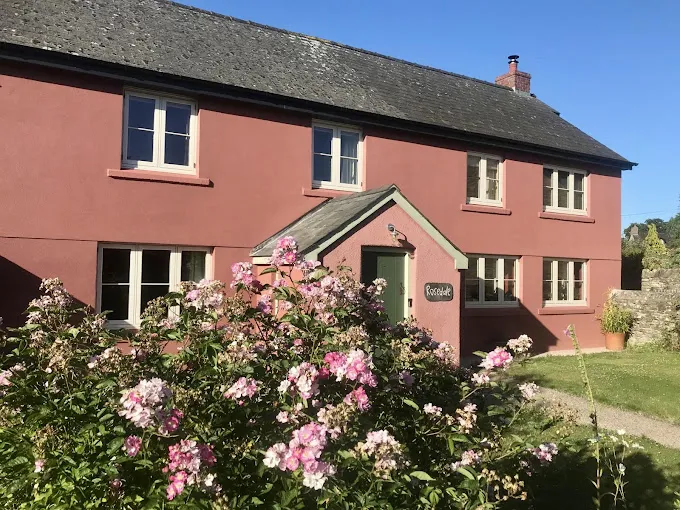Professional Spray Rendering Swansea Services
Spray rendering Swansea has transformed how property owners approach external wall finishes, offering faster application and superior consistency compared to traditional hand-applied methods. When considering exterior improvements for your Swansea property, spray rendering provides an efficient solution that combines modern technology with proven durability. At Coloured Rendering South Wales, we bring over 25 years of expertise to every spray rendering Swansea project, ensuring your property receives the protection and aesthetic enhancement it deserves. Contact us at 07815 868070 to discuss how our spray rendering services can transform your property’s appearance and performance.
This comprehensive guide examines the spray rendering process, explores the various systems available, and explains why professional application makes such a significant difference to the final result. You’ll learn about the specific benefits for Swansea properties, understand the different render types suitable for coastal conditions, and discover how to choose the right solution for your particular needs.
Understanding Spray Rendering Technology
Spray rendering represents a significant advancement in external wall finishing techniques, utilizing specialized equipment to apply render materials with precision and consistency. The process involves pumping mixed render through high-pressure spray equipment, creating an even coating that adheres uniformly to prepared surfaces. This method eliminates the inconsistencies often associated with hand application, where variations in technique and fatigue can affect the final finish quality.
The spray rendering Swansea process begins with thorough surface preparation, ensuring optimal adhesion and performance. Substrates are cleaned, primed where necessary, and any defects addressed before application begins. The spray equipment allows for controlled application rates and consistent material distribution, resulting in uniform thickness across the entire surface area.
Call Us
Modern spray rendering systems accommodate various render types, from traditional cement-based formulations to advanced silicone and acrylic systems. Each material requires specific application parameters, including pressure settings, nozzle configurations, and application techniques. Professional contractors understand these requirements and adjust their equipment accordingly to achieve optimal results for each render type.
The efficiency of spray rendering becomes particularly apparent on larger surfaces, where the speed advantage over hand application is most pronounced. However, the benefits extend beyond mere speed, encompassing improved consistency, reduced material waste, and enhanced finish quality that justifies the investment in professional spray rendering services.
Equipment and Application Methods
Professional spray rendering equipment consists of several key components working together to deliver consistent results. The mixing system ensures render materials are properly combined and maintained at optimal consistency throughout the application process. Pumping systems generate the pressure required to transport mixed render through hoses to the spray gun, where precise nozzles control the spray pattern and material flow.
Different spray patterns suit various applications and finish requirements. Wide fan patterns enable rapid coverage of large areas, while narrower patterns provide greater control for detailed work around windows, doors, and architectural features. Professional operators adjust these parameters based on surface conditions, render type, and desired finish characteristics.
The spray rendering Swansea approach requires careful consideration of weather conditions, as wind, temperature, and humidity all affect application quality. Experienced contractors monitor these factors and adjust their techniques accordingly, ensuring optimal adhesion and curing conditions for each project.
Render Systems for Swansea Properties
Swansea’s coastal location presents unique challenges for external wall finishes, making render selection particularly important for long-term performance. The combination of salt air, driving rain, and temperature fluctuations requires renders that can withstand these demanding conditions while maintaining their appearance and protective qualities.
Silicone-based renders excel in coastal environments, offering superior flexibility and water resistance compared to traditional cement systems. These modern formulations remain breathable while repelling water, allowing moisture within walls to escape while preventing external water ingress. The self-cleaning properties of silicone renders help maintain appearance in environments where salt deposits and atmospheric pollution can accumulate on surfaces.
Monocouche through-colour renders provide another excellent option for Swansea properties, combining durability with aesthetic appeal. These single-coat systems incorporate colour throughout their thickness, eliminating the need for subsequent painting and ensuring consistent appearance even if minor surface damage occurs. The cement-based formulation provides excellent weather resistance while offering a range of textures and finishes to suit different architectural styles.
Acrylic render systems offer a balance between performance and cost-effectiveness, providing good weather protection with the flexibility to accommodate minor building movement. These systems work particularly well on newer constructions or where existing substrates are in good condition, offering reliable protection with attractive finish options.
Coastal Considerations for Render Selection
Properties in Swansea face particular challenges from their proximity to the sea, requiring careful consideration of render system selection. Salt-laden air can accelerate deterioration of inappropriate materials, while driving rain from prevailing winds tests the water resistance of external finishes. Understanding these factors helps in selecting render systems that will perform reliably in coastal conditions.
The breathability of render systems becomes crucial in coastal environments, where moisture levels tend to be higher and temperature fluctuations more pronounced. Renders that trap moisture within wall structures can lead to freeze-thaw damage during winter months, while poor breathability may contribute to internal condensation problems.
UV resistance is another important consideration, as reflected light from water surfaces can intensify solar exposure. Quality render systems incorporate UV-stable pigments and binders that maintain their appearance and properties despite prolonged exposure to intense sunlight.
Wind-driven rain presents perhaps the greatest challenge for coastal properties, requiring renders with excellent water resistance combined with good adhesion to prevent water penetration at vulnerable points. Professional spray rendering Swansea services ensure proper application techniques that maximize these protective qualities.
Benefits of Professional Spray Application
Professional spray rendering offers numerous advantages over both DIY attempts and traditional hand application methods. The consistency achieved through spray application ensures uniform thickness across the entire surface, eliminating the variations that can occur with hand application techniques. This consistency translates into more predictable performance and appearance over time.
Speed of application represents another significant benefit, particularly important for commercial projects or when weather windows are limited. Professional spray rendering Swansea services can complete projects in a fraction of the time required for hand application, reducing labour costs and minimizing disruption to property occupants.
Material efficiency improves significantly with spray application, as the controlled delivery system reduces waste compared to traditional methods. The ability to apply thin, even coats means less material is required to achieve the specified thickness, while the precision of spray application minimizes overspray and material loss.
Quality control becomes more manageable with spray application, as the consistent delivery system eliminates many variables that can affect hand application results. Professional operators can maintain steady application rates and monitor coverage in real-time, making adjustments as needed to ensure optimal results throughout the project.
The professional spray rendering approach also enables better handling of challenging surfaces, such as textured substrates or areas with complex geometry. The flexibility of spray application allows operators to maintain consistent coverage even on irregular surfaces that would be difficult to finish properly by hand.
Long-term Performance Advantages
Properties finished with professional spray rendering typically demonstrate superior long-term performance compared to hand-applied alternatives. The uniform application achieved through spray techniques creates a more consistent barrier against weather elements, reducing the likelihood of premature failure at weak points.
Maintenance requirements often prove lower for spray-applied renders, as the consistent finish is less prone to the localized problems that can occur with uneven hand application. This translates into reduced long-term costs and less frequent intervention to maintain appearance and performance.
The precision of spray application also enables optimal use of render system properties, ensuring that protective and aesthetic qualities perform as intended by manufacturers. This is particularly important for advanced render systems where specific application parameters are critical to achieving designed performance levels.
| Application Method | Coverage Rate | Consistency | Finish Quality | Suitability for Large Areas |
|---|---|---|---|---|
| Spray Rendering Swansea | Excellent | Superior | Professional | Ideal |
| Hand Application | Moderate | Variable | Skill Dependent | Limited |
| DIY Application | Poor | Inconsistent | Unpredictable | Unsuitable |
Coloured Rendering South Wales: Your Local Spray Rendering Specialists
Since 1998, Coloured Rendering South Wales has established itself as the premier provider of spray rendering Swansea services, combining traditional craftsmanship with modern application technology. Our team brings over 25 years of experience to every project, ensuring that your property receives the highest standard of workmanship and attention to detail that has earned us a perfect 5.0 Google rating.
We specialize in all major render systems, from advanced silicone formulations to traditional cement-based options, always selecting the most appropriate solution for your specific property and requirements. Our spray rendering expertise enables us to complete projects efficiently while maintaining the exacting standards that have made us the trusted choice for homeowners, developers, and commercial property owners throughout Swansea and South Wales.
Our comprehensive service begins with a free consultation where we assess your property’s condition and discuss your objectives. We provide detailed recommendations based on factors including building age, substrate condition, exposure conditions, and aesthetic preferences. Our transparent quotation process ensures you understand exactly what work will be undertaken and what results you can expect.
The spray rendering Swansea service we provide includes thorough surface preparation, professional application using the latest spray equipment, and post-completion support to ensure your satisfaction. We understand the unique challenges facing Swansea properties, from coastal weather exposure to the specific requirements of different architectural styles common in the area.
Contact us at 07815 868070 or email geoff@colouredrenderingsouthwales.com to discuss your spray rendering requirements. Our local knowledge and proven expertise ensure your project will be completed to the highest standards, providing years of reliable protection and enhanced appearance for your property.
Current Trends in Spray Rendering Applications
The spray rendering industry continues to evolve, with new materials and techniques offering enhanced performance and aesthetic options. Contemporary colour palettes favor neutral tones that complement both traditional and modern architecture, while texture options have expanded to include subtle variations that add visual interest without overwhelming building proportions.
Environmental considerations increasingly influence render selection, with manufacturers developing formulations that reduce environmental impact while maintaining performance standards. These developments align with broader construction industry trends toward sustainability and reduced carbon footprints.
Technology integration is becoming more sophisticated, with spray equipment incorporating digital controls that ensure consistent application parameters throughout projects. These advances enable even greater precision and repeatability in spray rendering Swansea applications.
The trend toward combined systems, such as external wall insulation with integrated render finishes, reflects growing awareness of energy efficiency requirements. These comprehensive solutions address multiple property improvement objectives simultaneously, providing enhanced value for property owners.
Conclusion
Spray rendering Swansea represents the pinnacle of modern external wall finishing technology, combining efficiency, consistency, and superior results that traditional application methods cannot match. The unique challenges facing Swansea properties, from coastal weather exposure to diverse architectural styles, require the expertise and precision that professional spray rendering services provide.
Understanding the various render systems available, from advanced silicone formulations to traditional cement-based options, enables informed decisions about the most appropriate solution for your specific requirements. The benefits of professional spray application extend far beyond mere convenience, encompassing improved consistency, enhanced durability, and long-term cost effectiveness that justify the investment in quality workmanship.
As you consider external improvements for your Swansea property, remember that the choice of contractor is just as important as the selection of render system. Experience, local knowledge, and proven track record all contribute to successful outcomes that protect and enhance your property for years to come.
How will professional spray rendering transform your property’s appearance and performance? What specific challenges does your Swansea property face that could be addressed through modern render systems? Which render system would provide the optimal balance of protection, aesthetics, and long-term value for your particular situation?
Take the first step toward transforming your property with professional spray rendering Swansea services. Contact Coloured Rendering South Wales today to arrange your free consultation and discover how our expertise can enhance your property’s protection, appearance, and value for years to come.



One Comment
Comments are closed.